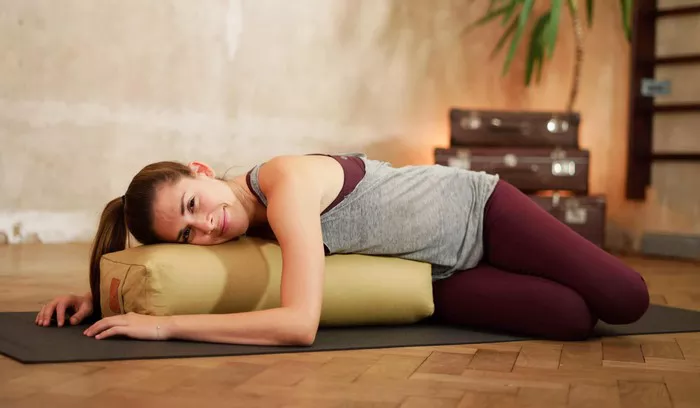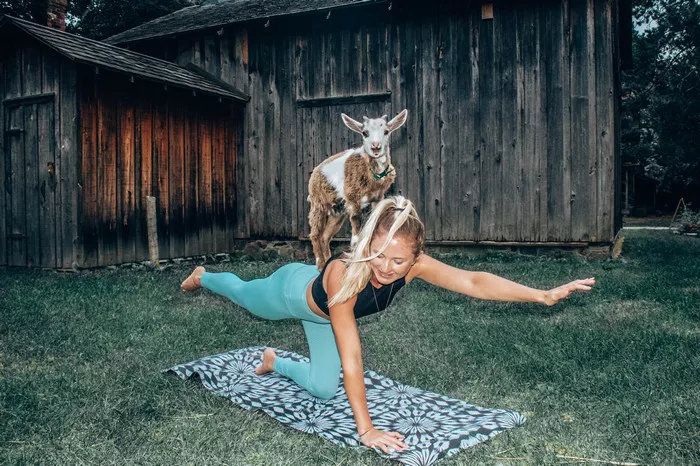Yoga has evolved over centuries, adapting to various cultural contexts and individual needs. One of the newer adaptations gaining popularity is Warm Yin Yoga, a practice that combines the deep, meditative stretches of Yin Yoga with the comforting heat of a warmed room. This article explores the origins, benefits, and practical aspects of Warm Yin Yoga, offering insights for both practitioners and instructors.
Understanding Yin Yoga
Origins and Philosophy
Yin Yoga is a relatively modern style of yoga that draws from ancient practices in Taoist philosophy and Traditional Chinese Medicine (TCM). It was popularized in the West by Paul Grilley and Sarah Powers in the late 20th century. Yin Yoga targets the body’s connective tissues—ligaments, tendons, and fascia—rather than focusing primarily on muscles. This practice involves holding poses for extended periods, typically ranging from three to five minutes, sometimes longer.
The Yin and Yang Concept
In Taoist philosophy, Yin and Yang represent opposite but complementary forces. Yin is associated with qualities such as passivity, coolness, and stillness, while Yang is characterized by activity, heat, and movement. Traditional Yang styles of yoga, such as Vinyasa or Ashtanga, emphasize dynamic movements and muscle engagement. In contrast, Yin Yoga emphasizes relaxation and surrender, fostering a meditative state that allows the body to open up gradually.
Physiological and Psychological Benefits
The benefits of Yin Yoga extend beyond physical flexibility. By targeting the deeper connective tissues, Yin Yoga helps improve joint mobility and overall flexibility. Additionally, the meditative aspect of holding poses for longer periods can enhance mental clarity, reduce stress, and promote a sense of inner peace. This practice encourages mindfulness, allowing practitioners to connect more deeply with their bodies and emotions.
See Also: What Is Yin and Yang Yoga?
The Concept of Warm Yoga
The Role of Heat in Yoga
Heat has long been associated with yoga, particularly in styles like Bikram Yoga, where the room is heated to around 105°F (40°C) with high humidity. The heat in Warm Yin Yoga, however, is usually less intense, providing a gentle warmth that supports the practice without overwhelming the practitioner. Typically, Warm Yin Yoga is practiced in a room heated to 80-90°F (27-32°C).
Benefits of Practicing in a Warm Environment
The warmth in Warm Yin Yoga offers several benefits:
Enhanced Flexibility: Heat increases the elasticity of muscles and connective tissues, allowing for deeper stretches and reducing the risk of injury.
Improved Circulation: The warmth helps improve blood flow, which can aid in the healing of tissues and the overall functioning of the cardiovascular system.
Detoxification: Sweating during practice helps to eliminate toxins from the body, promoting overall health.
Mental Relaxation: The warm environment can create a sense of comfort and relaxation, helping to reduce stress and anxiety levels.
Warm Yin Yoga: A Harmonious Fusion
Integrating Yin Yoga with Heat
Warm Yin Yoga combines the slow, meditative stretches of Yin Yoga with the benefits of a warm environment. This fusion enhances the effectiveness of Yin poses, making it easier for practitioners to relax and deepen into the stretches. The heat also supports the therapeutic goals of Yin Yoga by making the body more pliable and receptive to the practice.
Typical Warm Yin Yoga Class Structure
A typical Warm Yin Yoga class lasts between 60 to 90 minutes and follows a sequence designed to target specific areas of the body. Here’s a general structure of a Warm Yin Yoga session:
Preparation and Intention Setting: The class begins with a few moments of centering and setting an intention for the practice. This helps to create a mindful and focused environment.
Warm-Up: Gentle movements and stretches to acclimate the body to the warm environment and prepare for deeper holds.
Yin Poses: A series of Yin poses held for three to five minutes each. The instructor may use props such as bolsters, blocks, and blankets to support the body in these poses.
Restorative Poses: Towards the end of the class, restorative poses are introduced to promote relaxation and integration of the practice.
Savasana (Final Relaxation): The class concludes with Savasana, a pose of complete relaxation, allowing the body and mind to absorb the benefits of the practice.
Key Poses in Warm Yin Yoga
Butterfly Pose (Baddha Konasana)
- How to Perform: Sit with your feet together and knees dropped to the sides. Gently fold forward, allowing your spine to round and your head to hang.
- Benefits: Stretches the hips, inner thighs, and lower back. Encourages a deep release in the groin area.
Dragon Pose (Anjaneyasana)
- How to Perform: From a kneeling position, step one foot forward into a low lunge. Allow your hips to sink forward and down, feeling a stretch in the hip flexors and quadriceps of the back leg.
- Benefits: Opens the hips, stretches the thighs and groin, and strengthens the legs.
Saddle Pose (Supta Virasana)
- How to Perform: Sit between your heels with your knees bent and feet pointing back. Slowly recline backward, either onto your forearms or all the way to the floor.
- Benefits: Stretches the quadriceps, hip flexors, and lower back. Opens the chest and shoulders.
Melting Heart Pose (Anahatasana)
- How to Perform: Start on your hands and knees. Walk your hands forward, lowering your chest towards the floor while keeping your hips elevated.
- Benefits: Stretches the spine, shoulders, and chest. Encourages heart opening and deep relaxation.
Reclining Twist (Supta Matsyendrasana)
- How to Perform: Lie on your back and draw one knee towards your chest. Cross it over your body towards the opposite side, allowing your hips and spine to twist.
- Benefits: Releases tension in the spine, massages the internal organs, and promotes relaxation.
The Role of Props in Warm Yin Yoga
Supporting the Body
Props are essential in Warm Yin Yoga, providing support and enhancing comfort in the poses. Common props include bolsters, blankets, blocks, and straps. These tools help maintain proper alignment and prevent strain, allowing practitioners to fully relax into each pose.
Enhancing the Experience
Using props can deepen the therapeutic benefits of Warm Yin Yoga. For example, a bolster under the knees in Butterfly Pose can reduce strain on the lower back, making the pose more accessible and comfortable. Similarly, blocks can support the hands in Melting Heart Pose, allowing for a gentler stretch.
The Psychological Benefits of Warm Yin Yoga
Stress Reduction
Warm Yin Yoga is highly effective in reducing stress. The combination of gentle heat and prolonged holds in poses promotes the release of tension and encourages a state of deep relaxation. This practice activates the parasympathetic nervous system, which is responsible for the body’s rest and digest response, helping to counteract the effects of chronic stress.
Mindfulness and Meditation
Holding poses for extended periods provides an opportunity for mindfulness and meditation. Practitioners are encouraged to focus on their breath and the sensations in their bodies, fostering a deeper connection to the present moment. This meditative aspect can lead to increased mental clarity, emotional stability, and overall well-being.
Emotional Release
Warm Yin Yoga can facilitate emotional release. As the body relaxes and opens, buried emotions may surface, allowing practitioners to process and release them. This cathartic experience can lead to greater emotional balance and a sense of liberation.
Precautions and Considerations
Hydration
It’s essential to stay hydrated before, during, and after a Warm Yin Yoga session. The warm environment can cause increased sweating, so drinking water is crucial to prevent dehydration.
Listening to Your Body
Practitioners should listen to their bodies and avoid pushing beyond their limits. The heat can sometimes mask the body’s signals, making it easier to overstretch. Instructors should remind students to be mindful of their boundaries and to use props as needed.
Contraindications
Warm Yin Yoga may not be suitable for everyone. Individuals with certain medical conditions, such as cardiovascular issues, high blood pressure, or heat sensitivity, should consult a healthcare provider before practicing. Pregnant women should also seek guidance from a qualified instructor.
Conclusion
Warm Yin Yoga is a harmonious blend of deep, meditative stretching and the therapeutic benefits of a warm environment. This practice offers a unique opportunity to enhance flexibility, improve circulation, and promote mental relaxation. By integrating the principles of Yin Yoga with the supportive warmth, practitioners can experience profound physical and psychological benefits.
Whether you are a seasoned yogi or new to the practice, Warm Yin Yoga provides a welcoming and nurturing space to explore the depths of your body and mind. Embrace the gentle heat, surrender to the poses, and discover the transformative power of this beautiful practice.
Related topics:

























